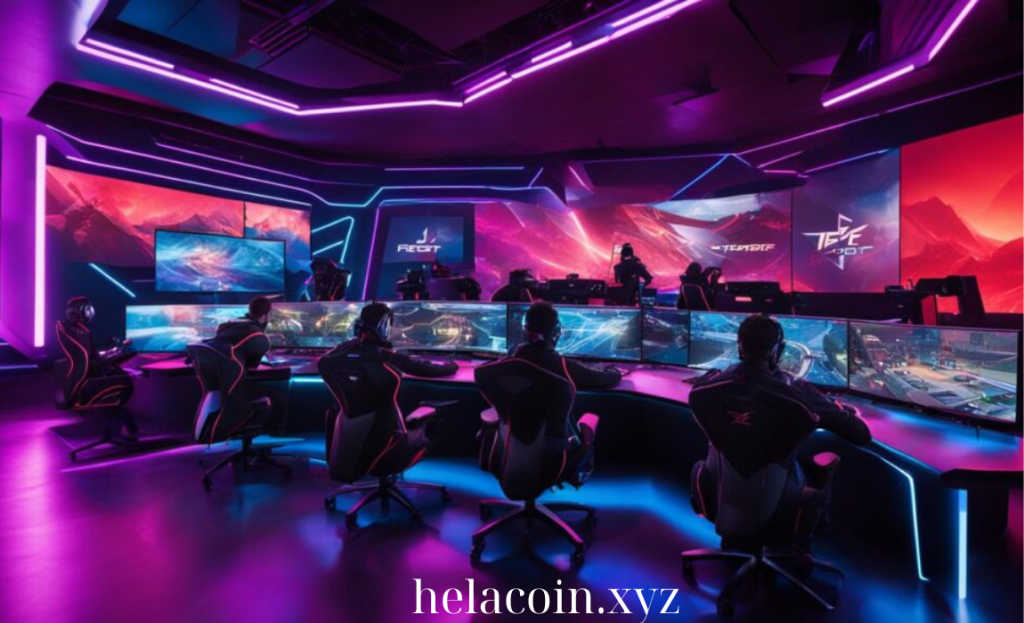Industry & Culture
eSports Industry Trends: Exploring the Future of Competitive Gaming
The world of eSports has undergone a meteoric rise over the past decade, transforming from niche hobbyist gatherings into a global phenomenon rivaling traditional sports in viewership, revenue, and cultural impact. As technology evolves and societal attitudes shift, the eSports industry continues to innovate and expand, setting the stage for an exciting future. This comprehensive guide explores the latest eSports industry trends, shedding light on the factors driving the growth and shaping the future of competitive gaming.
1. Explosive Growth of eSports Viewership
Key Trends:
- Global Audience Expansion: eSports viewership has surged, with global audiences expected to surpass 600 million by 2024. Major tournaments like The International, League of Legends World Championship, and Dota 2 Championships attract millions of viewers worldwide.
- Mainstream Media Integration: Traditional media outlets, including ESPN, ABC, and YouTube, have embraced eSports, broadcasting major events and reaching broader audiences.
- Mobile eSports: The proliferation of smartphones has fueled the growth of mobile eSports, making competitive gaming accessible to a wider demographic. Games like PUBG Mobile, Honor of Kings, and Free Fire dominate the mobile eSports scene.
Example:
The League of Legends World Championship consistently draws over 100 million viewers globally, demonstrating the massive appeal and widespread reach of eSports on par with traditional sports events.
2. Technological Advancements Shaping eSports
a. Virtual Reality (VR) and Augmented Reality (AR)
- Immersive Experiences: VR and AR technologies are enhancing the spectator experience by offering immersive viewing options, such as 360-degree replays and interactive overlays.
- Training and Practice: VR is being utilized for player training, allowing competitors to simulate in-game scenarios and improve their skills in a controlled environment.
b. Cloud Gaming
- Accessibility and Scalability: Cloud gaming platforms like Google Stadia, NVIDIA GeForce Now, and Microsoft xCloud are making high-quality gaming more accessible, reducing the need for expensive hardware and enabling seamless cross-platform play.
- Reduced Latency: Advances in cloud infrastructure are minimizing latency issues, crucial for real-time competitive gaming.
Example:
Facebook’s Oculus Quest 2 is being integrated into eSports training programs, providing players with virtual environments to hone their reflexes and strategic thinking.
3. Increasing Investment and Sponsorship
Key Trends:
- Corporate Sponsorships: Major brands such as Intel, Red Bull, Nike, and Coca-Cola are investing heavily in eSports, sponsoring teams, tournaments, and individual players.
- Venture Capital and Funding: Startups and eSports platforms are attracting significant venture capital, fueling innovation and expansion within the industry.
- Merchandising and Licensing: Revenue from merchandise sales, including team jerseys, branded apparel, and in-game items, is becoming a substantial income stream for eSports organizations.
Example:
Razer, a leading gaming hardware manufacturer, has invested in multiple eSports teams and events, leveraging their brand presence to enhance their market reach within the gaming community.
4. Professionalization and Athlete Development
Key Trends:
- Structured Training Programs: Professional eSports organizations are implementing rigorous training regimens, including physical fitness, mental coaching, and strategic planning, mirroring traditional sports teams.
- Scholarships and Educational Programs: Universities and colleges are offering eSports scholarships and developing dedicated programs to nurture future talent.
- Career Pathways: The establishment of professional leagues and leagues of varying tiers provides clear career pathways for aspiring eSports athletes.
Example:
University of California, Irvine (UCI) boasts one of the top collegiate eSports programs, offering scholarships and state-of-the-art training facilities to support student-athletes.
5. Expansion of Game Titles and Genres
Key Trends:
- Diverse Game Selection: Beyond traditional MOBAs and FPS games, eSports is expanding into genres like battle royale, sports simulations, fighting games, and real-time strategy.
- New and Emerging Titles: Games like Valorant, Apex Legends, and Rocket League are rapidly gaining traction in the competitive scene, attracting new audiences and players.
- Cross-Genre Competitions: Hybrid events that feature multiple game genres are becoming popular, offering fans a variety of competitive experiences.
Example:
Rocket League combines soccer with high-speed cars, creating a unique and thrilling eSports experience that has cultivated a dedicated fan base and numerous professional leagues.
6. Integration with Traditional Sports
Key Trends:
- Collaborations and Partnerships: Traditional sports organizations, such as NBA and MLB, are partnering with eSports entities to create hybrid events and cross-promotional opportunities.
- Talent Crossover: Athletes from traditional sports are transitioning into eSports roles, leveraging their competitive spirit and fan bases to gain popularity in the gaming world.
- Joint Sponsorships: Brands are sponsoring both traditional sports and eSports teams, creating unified marketing strategies that target a broader audience.
Example:
The NBA 2K League is a professional eSports league officially affiliated with the National Basketball Association (NBA), featuring NBA teams with rosters of professional eSports players.
7. Diversity and Inclusion Initiatives
Key Trends:
- Gender Representation: Efforts to increase female participation in eSports through dedicated leagues, scholarships, and support networks are gaining momentum.
- Cultural Inclusivity: Promoting diverse cultural backgrounds within teams and fan communities helps broaden the appeal and accessibility of eSports.
- Accessibility for All: Initiatives to make eSports more accessible to individuals with disabilities, including adaptive gaming equipment and inclusive event designs, are being implemented.
Example:
Riot Games, the developer behind League of Legends, has launched several initiatives aimed at fostering a more inclusive and diverse community, including the Riot Women program that supports female players and content creators.
8. Blockchain and NFTs in eSports
Key Trends:
- Digital Ownership: Non-Fungible Tokens (NFTs) are revolutionizing the way fans engage with eSports by providing digital ownership of unique in-game items, memorabilia, and virtual real estate.
- Decentralized Economies: Blockchain technology enables secure and transparent transactions within eSports ecosystems, fostering trust and enabling new revenue streams.
- Fan Engagement: NFTs and blockchain-based rewards systems are enhancing fan engagement by offering exclusive content, experiences, and incentives for participation.
Example:
Sorare, a blockchain-based fantasy football game, is expanding into eSports by allowing fans to trade digital collectibles of their favorite eSports players, blending traditional fantasy sports with blockchain innovation.
9. Sustainability and Ethical Practices
Key Trends:
- Eco-Friendly Initiatives: eSports organizations are adopting sustainable practices, such as reducing carbon footprints through energy-efficient event management and promoting digital over physical merchandise.
- Ethical Governance: Establishing fair play policies, combating cheating, and ensuring player welfare are critical focus areas to maintain the integrity of the sport.
- Community Responsibility: eSports entities are increasingly involved in social responsibility programs, supporting causes like mental health awareness, education, and community development.
Example:
Team Liquid has committed to sustainability by implementing eco-friendly practices at their events and promoting environmental awareness within their community through various initiatives.
10. Globalization of eSports
Key Trends:
- Emerging Markets: Regions like Southeast Asia, Latin America, and Africa are experiencing rapid growth in eSports participation and viewership, contributing to the global expansion of the industry.
- Localized Content and Events: Tailoring content and events to fit local cultures and preferences helps eSports organizations penetrate new markets and build dedicated fan bases.
- International Competitions: Expanding the reach of international tournaments and creating region-specific leagues fosters global competition and collaboration within the eSports community.
Example:
Garena has successfully expanded eSports in Southeast Asia with games like Free Fire, hosting numerous regional tournaments and fostering a thriving competitive scene that rivals established markets in North America and Europe.
11. Conclusion: The Future of eSports is Bright and Boundless
The eSports industry is on an upward trajectory, driven by technological innovations, increasing investments, and a passionate global fan base. As the landscape continues to evolve, eSports is poised to integrate further into mainstream culture, offering unparalleled experiences for players, fans, and stakeholders alike. The future of competitive gaming is not only about the games themselves but also about the communities, technologies, and ethical frameworks that support and sustain this vibrant and dynamic industry.
By embracing trends such as virtual reality, blockchain integration, and global expansion, the eSports industry is set to redefine the boundaries of competitive entertainment. As it continues to grow and innovate, eSports will undoubtedly play a pivotal role in shaping the future of both gaming and global entertainment.

